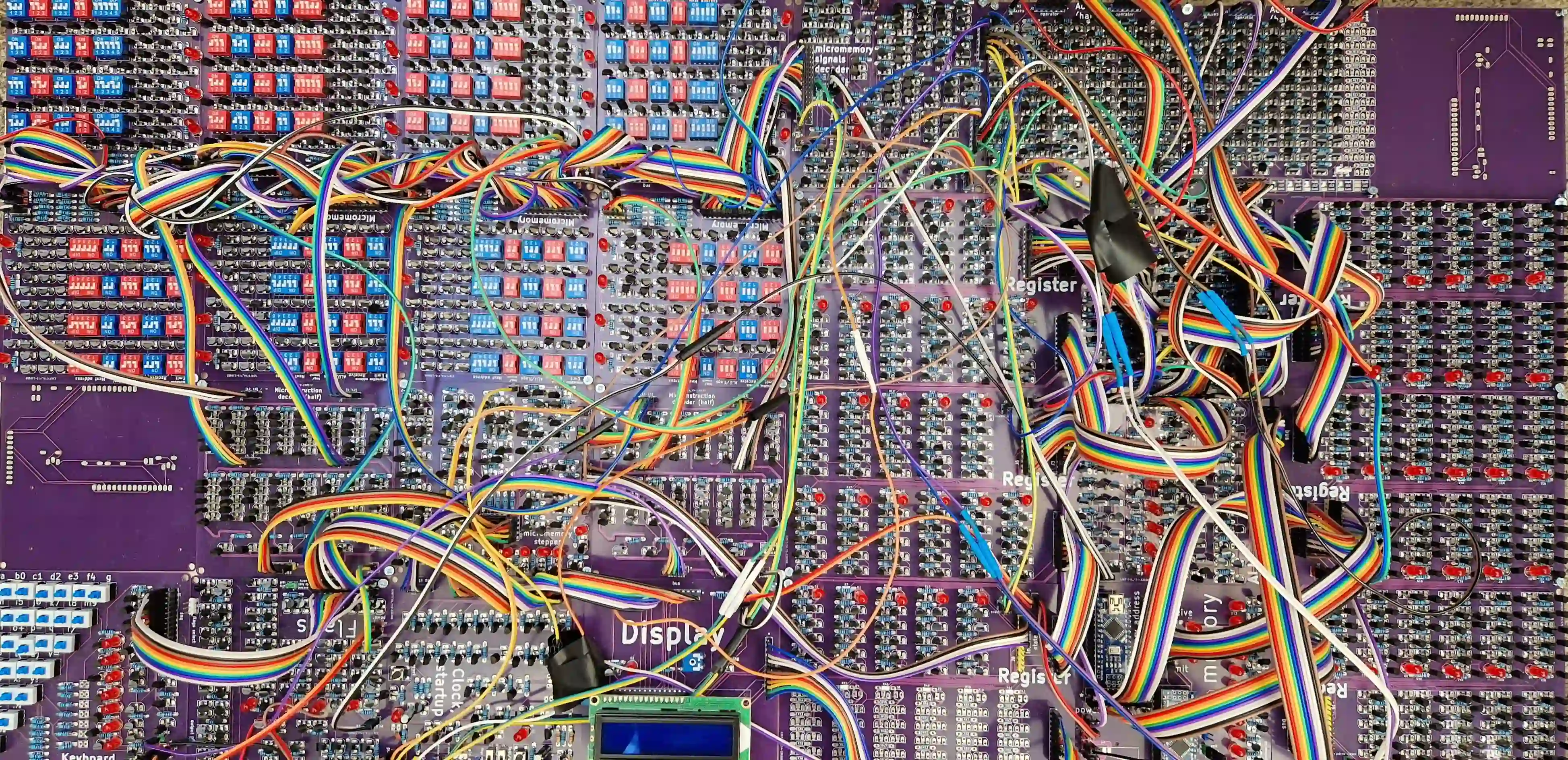Learn How CPU works
This is my processor that I built completely from transistors.
In this interactive online course we will go in depth how I actually built it.
Get lifetime access:
The course contains:
40
25+
71
There are also 17 annotated images and 40 different diagrams of the processor which help you connect the basic concepts learned and simulated to the broader working of the processor.
We use over 70 simulations to slowly build understanding and intuition.
Many chapters have questions after the main text which test your understanding and help you grok the content.
My project was mentioned in:
online ebook: Building Processors from the Ground Up https://t.co/jKKZUXQX5F
— (((JReuben1))) (@jreuben1) October 1, 2023
2000 discrete (MOSFET) transistors, Arduino for memory..!https://t.co/LrhokWIF5E
— Danny Ayers 🌳 (@danja) September 30, 2023
Building Processors from the Ground Up https://t.co/nhqB1Y0cky
— Winson Tang (@winsontang) September 30, 2023
Learn assembly
Below is the classic "Hello world" program. We will explain assembler, go through simple exercises and program the same thing in our online simulator!

Course elements
Every chapter explains one concept and they usually end by assembling one part of the processor.
They also contain interactive simulations and questions.
An example of a circuit simulator and a question:
Architecture chapters have simulations of various memory-register architectures, including:
- stack
- accumulator
- register-register
- register-memory
Questions that test your understaning
Many chapters have questions at the end. They do not test memory, but help you deepen your understanding of topics presented.
All questions have answers and longer questions, such as ones including the simulator, have hints also. Here is an example from micromemory chapter:
No hiding complexity
There are some projects on the internet that build small 8 bit computers out of integrated circuits, like registers, bus selectors, decoders, etc. this is not the focus of this course. We do not use any integrated circuits, there is no hiding complexity.
Frequently Asked Questions
What prerequisites do I need for this course?
Basic knowledge of electronics and understanding of fundamental programming concepts are nice to have, but all the things that we really need are explained.
How long is the course?
There are 25 different topics. You can also see topics on the left.
There are 25 different topics. You can also see topics in "Chapters" drop down menu at the top.
There are also example articles, the ones withot locks, so you can estimate the total length.
How up-to-date is the course material?
The course has two parts, the fundemental processor design part and specifics of a single (my) implementation. The fundemental processor design part is timeless, this is by definition. Specifics of my processor are also timeless. They show a single solution to series of constraints posed by building a processor yourself, where the main constraint is the number of transistors.
Do I need to purchase any additional materials or software?
No!!! All the simulations are browser native. This means that you can run them on the phone, tablet, laptop, etc. all without downloading a single program.
Can I get a refund if I'm not satisfied with the course?
The refund policy is pretty lax. As long as you contact us within day or two and mention why you did not like it you can get you money back.
Will there be any hands-on projects?
This course explains how to build a processor and walks through the specifics of my processor. There are no hands-on projects.
Is there an option for advanced learning after this course?
My todo list contains a much more capable processor, with more transistors, higher clock rates, etc. The next course will focus on it and more advanced things like pipelining, branch prediction, VGA display...
Still not sure?
Check out several public articles:
You can also see topics on the left.
You can also see topics in "Chapters" drop down menu at the top.






